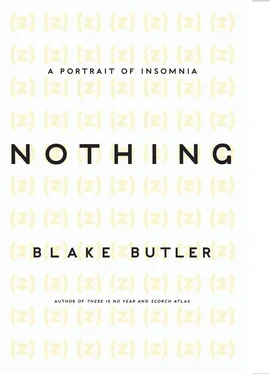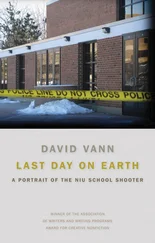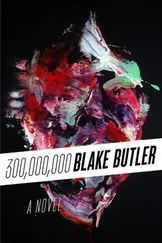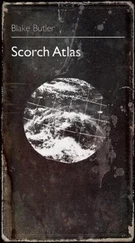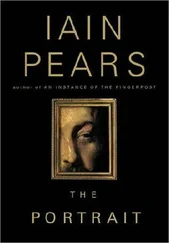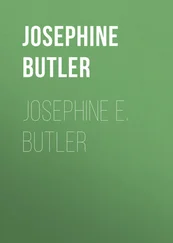One cube across from Cortázar, Italo Calvino’s If on a winter’s night a traveler , beginning and ending in repetition, the narratives lost, erased, cut short, despite instructions for their handling, arranged in rupture around some hidden center.158 On the back side of the same shelf, David Markson’s This Is Not a Novel , a catalog of artists’ lives, condensed to certain sayings, actions taken, configurations in single lines, therein together forming an index, a hive of lives.159 Catty-corner to Markson, Ronald Sukenick’s The Endless Short Story made endless not by actually never ending, or even exhibiting the novel as continuous in loop (à la Joyce), but rather by referring to the book within itself, contextless, as if a node meant to be found hidden there in its meat, the paper text not the thing itself, but a conditional suggestion, a roadmap to some hole. “This is THE ENDLESS SHORT STORY. It doesn’t matter where you start. You must have faith.”160 Nearly spine to spine with Sukenick, Infinite Jest : within which, a footnote containing outlines of all those unmade films, again, or those made and lost films, or films that exist by mere suggestion, films buried, waiting, asking, on. Those films’ creator, within the book, James O. Incandenza, who therein “demapped” himself, ending his brain, as would his own creator. This filmography in some way comprises the ultimate text-based correlation to the out-of-field — mass in mass, embedded — though in the case of Infinite Jest , it is this footnote that most objectively defines the object of the book itself — the object for which the book is named, Incandenza’s final film, the last film in the footnote’s massive, branching archive.
The tone of the blood of David Wallace on the day he first heard inside him those two words, that title of that object, sent in him — to be repeated and repeated on thereafter, upon air. The air or food he ate, the incidental sound he absorbed between the typing, any seeing. His hands.
Today.
On the opposite side of the bookshelf from Infinite Jest , the frayed ends of its white pages facing toward the book I’ve just replaced, sits the Collected Fictions of Borges, literally itself the meat of several books within one book. Within the book Fictions appears, again, the text “The Library of Babel,” which among its paper walls contains another set of walls, these provided with compartments for “sleeping, upright” (as in, perhaps, in waking form); a mirror that many men use an excuse to suggest “that the Library is not infinite”;161 light “insufficient, and unceasing”; all in consideration of the perfect replication of book housing, conceivably within a sphere whose exact center is any hexagon and whose circumference is unattainable . According to the text, each of the five walls holds five bookshelves, each shelf thirty-two books, each book 420 pages, each page forty lines, each line “approximately eighty black letters,” therein made up of “identical elements: the space, the period, the comma, and the twenty-two letters of the alphabet,” of which, regardless, “ there are no two identical books ,” and therefore the Library contains “all possible combinations of the twenty-two orthographic symbols… all that is able to be expressed, in every language.” The resulting Library, like a brain, is therefore “unimaginably vast but not infinite,” “unlimited but periodic,” a place “where after untold centuries… the same values are repeated in the same disorder… which, repeated, becomes order: the Order,” containing not only the histories of cultures come and gone, mythologies, archaeologies, but also, and in much greater proportion, a mountain of surrounding gibberish. Among these books, the text continues, there must be a perfect book, “the cipher and perfect compendium of all other books ,” which has been looked upon by some librarian, therein a god . The search for him is proposed via “regression: To locate book A, first consult book B, first consult book C, and so on, to infinity. ..” In infernal, likely futile pursuit of that book, the narrator says, “Let heaven exist, though my own place be in hell. Let me be tortured and battered and annihilated, but let there be one instant, one creature, wherein thy enormous Library may find its justification.”
What is a justification but an end. What is a recurring thought but some senseless, timeless parsing of the nothing eating at the skull under the skull, the brain’s flesh writing its language on the insides, a novel never read. “The temporality of the body… can be understood as the double, in the actual, of the event, whose reality as pure interval of transformation is virtual, on the order of potential, more energetic than bodily, incorporeal. Or, its attachment to empirical time can be understood as the durational equivalent of the edge of the hole in empirical space into which the eyes of movement-vision disappear, in which case it would be the rim of the virtual at the crossroads of the actual.”162 Through sleep, the leaving doors becoming open, sending rooms onto themselves. The open field map of the open field becoming closed to this room as room, open to somewhere else — as in the way one could complete the puzzles set into the time-narrative of a video game without looking, with the screen turned silent or fully off, if one knew which buttons to push when. A life in timing, coagulated, code. Where are you now. The bends off any hallway passed over silent, still, unseen: the nonexistent building, a construct of no air.
]
]
]
Somewhere in between these hours of seeing and sleeping, a kind of connective tissue of the self in silence must awake. The mind via the body is open and absorbing, fed in air by something both architected and removed, responded to by cells continuously reorganizing, newly birthed and newly dead. Again, Deleuze: “We take snapshots, as it were, of the passing reality, and, these are characteristic of the reality, we have only to string them on a becoming abstract, uniform and invisible, situated at the back of the apparatus of knowledge. Perception, intellection, language, so proceed in general. Whether we would think becoming, or express it, or even perceive it, we hardly do anything else than set going a kind of cinematograph inside us.”163 Scenes on film provide a waking replication of the same meat of space traversed in dreaming and in being forced too long awake, through which the self goes through conscious modes in a kind of mushy impotence, captured in a realm that can’t be manipulated, altered, awoken. Like mobile environments — the boxed-in confines of an airplane or a car, a house transported on a truck bed, a body — films carry their air with them, manipulating the continuity of air by forcing displacement, even if concrete coordinates defining that air (as with GPS) remain the same.
This media-enabled mapmaking grows even deeper in what ends up not pictured, what is always just there at the edge of the camera, offscreen. Referred to by Deleuze as the out-of-field , this space erupts from the constant awareness that around the seen there is a larger set, and around that a larger set, and so on. This space-expanding replication goes so far out that no matter what is in the picture, there is more beyond it, giving definition to the space of the seen self. This space gains traction the further the field of the shot is limited, making the power of its surroundings that much more other, much confined. Much like the state of continual expectation of the other discussed by Levinas in the inconstant state of sleep, the confines of the confining enrich the immediate minute, the open node, with a kind of ever-looming sphere of power — something transcending the contained. “The more the image is spatially closed, even reduced to two dimensions, the greater is its capacity to open itself on to a fourth dimension which is time, and on to a fifth which is Spirit.”164 With Deleuze, the contained image and definition of the other lurking always there around it both defines the other in its absence and the absence in the context of that absence and its impending presence. It thereby allows the image to move from mere contained time and space (image) into mental image (transferred time, no time, nowhere, blank as ‘white on white which is impossible to film’). Each object, image, instant, then, becomes hyper-loaded, awake inside a body it can’t shape.
Читать дальше
